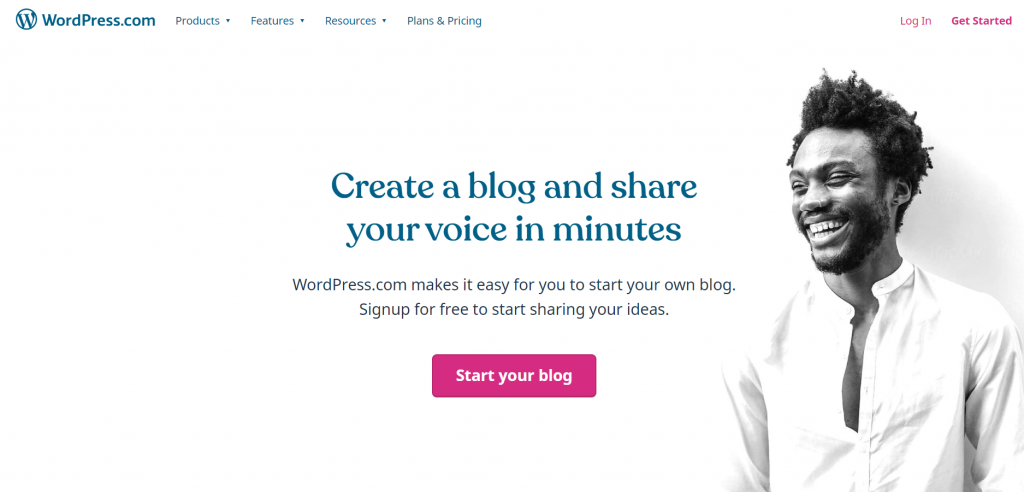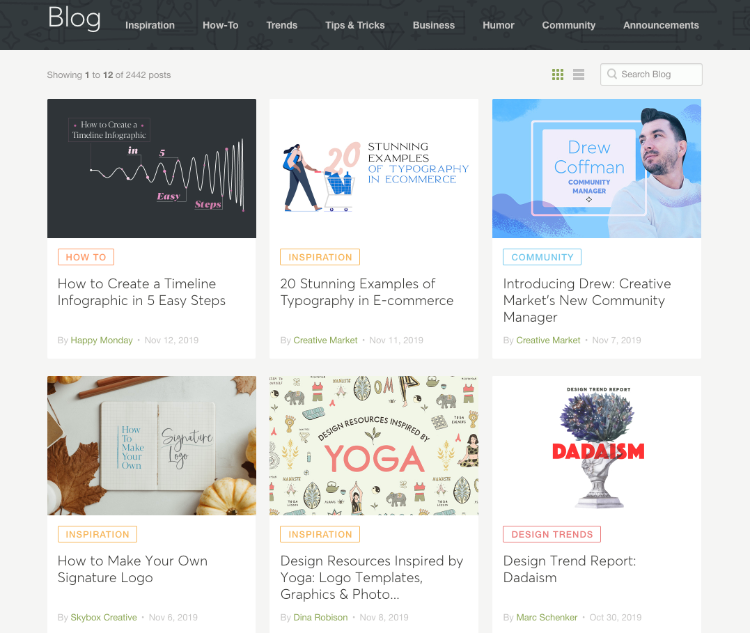
So, you wanted to be a blogger? To try something new? Great!!! I’m delighted that you have found yourself here. I’ve created this step-by-step guide just for you, which can help in creating a blog. And you know? It will not take more than a few minutes. So, let’s create a blog.
Contrary to what you might expect, blogging is not that difficult. You don’t need any knowledge about the codes or graphics. Sounds cool, right?
This blog will guide you step-by-step on how to start a blog (because anyone can do it). I’ll guide you on the exact steps that you should follow to set up a blog. I know you don’t want to wait any longer? So, Ready to get to work? You sure are!!! Let’s start with some necessary information. Let’s start a blog!
Related: HOW TO CREATE A SUCCESSFUL BLOG STRATEGY
Create a blog on your own in six simple steps:
- Choose a Blogging Platform
- Pick a Blog Name
- Get Your Blog Online (Hosting)
- Design Your Blog
- Add Content
Step 1: Choose a Blogging Platform
The blog platform is, in elementary terms, service, or software (like WordPress), specially designed, which allows you to publish your required content online.
Free Platforms:
Many people face difficulties in setting up a blog. That’s why many free blog platforms are so popular and in-demand (such as WordPress.com, Medium, Blogger, or Tumblr). They offer independent free publishing along with running services for your blog.
You can just create an account, and you can start blogging at no time. You do not have to worry about your blog hosting or your domain name. Even you do not have to pay any fees. But, there is only one thing that is very unfavorable to you; your blog does not belong to you. You cannot influence anything or anyone, and you’ll never be able to make money from your blog.
Self-hosted Platforms:
To create your website or start your blog, you can do everything yourself. And believe me, it’s not so complicated. If you want to start an all-new blog, all-by yourself, then you should always create a self-hosted blog. To create this, you just need three things: domain name, blog hosting, and a content management system or CMS. Thanks to CMS, you can manage your blog through a user-friendly user interface for add posts, video/audio content, extend or update, etc.).

Step 2: Pick a Blog Name
Picking the right name for your blog will be the most challenging task. But this guide has some tips for you that I hope will help you.
Your blog’s name is significant because, in the coming future, it will become your brand. Users will always associate it with you. Therefore, it should be easy to remember and must be related to the content of your blog.
The domain name should differentiate you from your competitions – it should be short, simple, and leave a good and lasting impression. Let’s not go through the motions that choosing the perfect domain name is going to be an easy task. It needs some thoughts, but don’t behold off – if others can do it, you can do it too! just never give up!
Here are some quick tips:
1. Do not use any hyphens and numbers: Blog names are difficult to remember. All new additions will only disrupt the fluidity of the blog name. They will make a user wonder where to place them, and therefore, the risk of making a mistake increases.
2. Easy to spell and, easy to say, easy to write: The name should always be catchy and easy to remember. It will be handy for a user if he can type it in the search browser from his memory.
It should be easy to remember. Easy to spell and easy to say and easy to write.
3. Should Have a Short Name: Preferably it should be one word, which can be difficult because almost these domains are already taken. You can have a maximum of 3 words.
4. Use your name: You can use your name. If you’re starting your website or blog, consider using your name. It’s an excellent strategy for building a unique brand.
5. Avoid trademark infringement: Make sure the name you choose does not belong to a third-party trademark. It can lead to serious legal problems which also cost you a lot of money.
Step 3: Get Your Blog Online (Hosting)
Hosting Provider is securing a space in its server for your blog. If the blog is in the server space, only then people can search and find it on the internet. In simple words, your blog needs to be on a server to be visible on the web.
Thousands of web hosts exist in the world, and the majority of which can meet the basic requirements of your blog, however finding the best one may prove to be quite our challenge.
Related: Artificial Intelligence to Improve Web Hosting Industry
Step 4: Design Your Blog
Finally, you can take care of your blog’s appearance. In my opinion, this is the most enjoyable part of creating a blog.
One of the most noteworthy advantages of creating your blog using paid versions is that you are provided with free themes and plug-ins.
Many websites offer more than 5000 free themes and more than 53,000 free plug-ins. It means that you have a wide selection of options, and you will surely find something for yourself.
Amazing, right? You can start a blog without worries.
Step 5: Add Content
Once you set up your blog, your next goal is to create content. The engaging content of your blog will be the bait that attracts your readers. In this post, we will cover what the material your blog consists of, types of content you can create, and blogging practices you should follow. Without any great content, even the most well-designed, tightly-structured blogs will ultimately fail.
Create Content With Readers In Mind
You’ll read a lot on the internet about optimizing your content for several search engines, and it is mandatory. If you don’t develop your content for human beings, then you’ll never be able to gain the exposure that it takes to ultimately get links and rank on top in the search engines. If you can write content that people love to read, then you will definitely get more traffic, shares, and links as your readership grows. You can use icons to represent each button or use official boxes, networks, and badges from these networks.
Set Your Blogging Goals
How could you know if you are getting the most out of blogging or not if you haven’t set the goals for your blog? Your goal is to make money, get a job, or find new people to connect with about a specific topic? Define and set your blogging goals and keep asking periodically if your blog is helping you meet them? If not, try to improve your blog to achieve the goals.
Engage With Your Audience
The best way to engage with your reader is to keep them interested. Some methods to do this include replying to them, responding to every query from your contact form, getting in conversations with your readers on various social networks, and looking up your readers’ blogs to know what they are interested in and join them in discussions. As you do this, you will be able to build a stronger relationship with your reader and learn more about their requirement which can inspire you for your future content.
Be Consistent And Realistic
Creating a consistent schedule for posting your blogs as it lets your readers know about when they can hear from you again; daily, weekly, monthly, or even quarterly. The key to maintaining consistency is only realistic. Individual bloggers can face difficulties in creating high-quality content daily. So, I suggest they start with some weekly or bi-weekly posts and work your way up to the daily job if that is your ultimate goal. Just don’t sacrifice quantity for quality.
Analyze The Data
Be sure to install Google Analytics when you begin blogging and regularly check your data. In particular, you want to make sure your traffic is growing and see what websites, social networks, and other types of sources drive the most visitors to your blog. You’ll also want to watch for significant drops in traffic, as these drops may indicate a bigger problem, such as downtime for your website or loss of transportation due to Google algorithm changes.
Never Underestimate Your Power To Change Yourself
You can write to change yourself. Ask any blogger, and you’ll often find that the process of writing usually ends up changing the writer. While trying to write for your reader, you find yourself understanding your thoughts and reasons better. You grasp your philosophy. You realize what you hadn’t before. When you sit down with the goal of teaching or helping or encouraging your reader, you end up changing yourself.
How do you change the world with your blog?
You change yourself, and it changes the world around you. That’s your power as a writer and blogger.




JeanJeanty
4 years ago
Stevon Lewis
4 years ago
Robert Lyons
4 years ago
Angela Nycz
4 years ago
Johanna Somorai
4 years ago